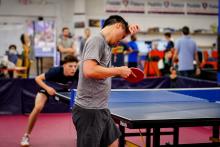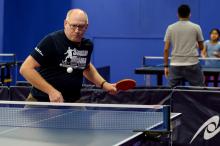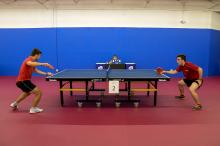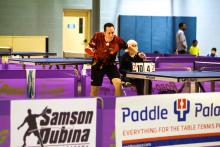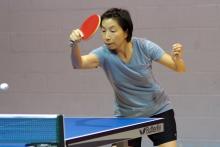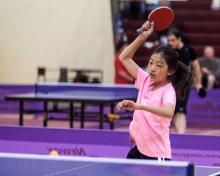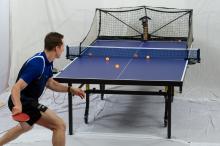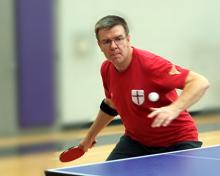by Samson Dubina on Tue, 2021-09-14 13:17
Learn to evaluate your training sessions!
3:1 Principle
Inconsistency is likely the main reason for your poor performance in tournaments. Will doing more drills help you? Possibly.
Here at the Samson Dubina Table Tennis Academy, we aren’t just concerned with the number of hours, we are also concerned about the quality of the hours realizing that each individual player might need to adjust his/her drills slightly. In this article, I’m going to briefly outline the 3:1 principle that we have developed.
by Samson Dubina on Tue, 2020-12-15 07:10
Check out these new drills!
Targeting the Transition
“You need to attack his middle.”
“I recommend that you play 80% of your hits to his transition point.”
“Hunt the elbow – play the elbow – your opponent gets jammed easily!”
by Samson Dubina on Sun, 2020-08-30 22:39
by Samson Dubina on Tue, 2017-02-28 10:06
Learn the benefits of BOTH
During drills, you can isolate a specific skill or skills. During practice matches, you can test those skill to see if you are implementing them correctly. A practice match is like a quiz. If you want to do well on the final exam, you need to take the quizzes to test yourself. If you are failing every quiz, then you need to learn the content better. If you aren’t performing well in practice matches, then you need to go back to the practice hall and work on specifics.
by Samson Dubina on Thu, 2016-06-23 08:00
Read the Article and Watch the Video!
When doing a private lesson, I usually have my student begin with a slight footwork drill for warm-up, consistency, and confidence. After a couple minutes, I’ll usually have him start with serve or serve return for the remainder of the drill. Many of my students are “bummed” when we start the drill with the serve because it “messes up” the drill. Before reading the rest of this article, I want you to watch a very short video of me doing a drill without the serve then doing the drill combining it with a tournament serve.
by Samson Dubina on Thu, 2016-05-19 07:54
Learn about Multi-Tasking and Unit-Tasking
At the lower-levels, it is critically important to unit-task, to focus exclusively on one particular skill and get it right. With many of my students who are rated 300-800, I will focus exclusively on their forehand loop or backhand push for 20-30 minutes and give them homework on doing shadow strokes or robot practice for just one skill at a time.
by Samson Dubina on Sat, 2015-10-03 20:59
Comparing Drills to Matches
One of the most frequently asked questions is..
“Samson, why do you do drills? Wouldn’t it be better to exclusively play matches each day?
Good Question. In preparing for the Olympic trials, there are many aspects of my game that I need to continually sharpen – strokes, footwork, serve, serve return, short game, offense, defense, etc… For isolating one or two aspects of the game, I can select unique drills to work that aspect over and over again during a 10 minute drill. So for performing drills, you can work on the specifics.
by Samson Dubina on Tue, 2015-01-27 20:32
by Samson Dubina on Thu, 2014-03-27 07:06
Read the benefits of various drills!
Newgy Robo-Pong 2050
Every robot comes with FREE LESSONS when purchased through www.samsondubina.com
If you are a beginner, I would recommend starting your practice with drills 1-5. With the spin set on TOPSPIN and the head angle set at TWO, select the drill number and begin. If the drill is too fast, then give yourself more time between balls by adding +20% on the wait adjust. As you progress, make it more fun and challenging by decreasing the wait adjust, giving you less time between balls.
Drill #1
by Samson Dubina on Wed, 2014-01-01 14:35
Learn about 4 recent changes!
During the last 18 years, I have practiced at many table tennis training centers in the US, Canada, Europe, and Asia. In recent years, I have recognized four modern changes at the elite level.
Blocking with More Variation
In the past, one player would consistently block in a set pattern and the attacking player would attempt to loop 10-20 balls in a rally. Now, the blockers have added more variation – sometimes harder, sometimes softer, sometimes flat, sometimes with a little topspin.
Multi-Location Blocking




